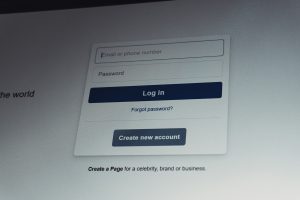Creative professionals in fashion and interior design thrive on imagination and aesthetics, but managing the numbers behind the scenes presents a very different set of challenges. Bookkeeping for these industries involves more than tracking expenses and invoices. It requires detailed management of project budgets, vendor payments, client billing, and irregular income streams.
Without solid financial systems in place, these businesses often face disorganization, delayed reporting, or missed tax obligations. To stay competitive and compliant, understanding common bookkeeping challenges is crucial. The right support structure makes it easier for designers to focus on their strengths while maintaining financial clarity and control.

Key Bookkeeping Challenges Facing Fashion And Interior Design Businesses
Managing Project-Based Finances
Unlike traditional businesses that rely on regular product sales, designers in fashion and interiors often work on a project-by-project basis. Each project may have its own timeline, client expectations, budgets, and vendor payments. This complexity can easily overwhelm basic accounting systems that are not designed for job costing or milestone tracking.
Project-based financial management requires bookkeeping systems that link income and expenses to specific jobs. Without this connection, it’s difficult to know whether a project is profitable or if spending is exceeding the scope. Misalignment can lead to cash flow issues or underpriced services.
Staying on top of incoming deposits, scheduled payments to contractors, and ongoing material costs is crucial. Using specialized software or hiring experts who understand the nuances of creative billing helps reduce confusion and increase transparency.
Tracking Purchases and Vendor Payments
Interior designers and fashion business owners often deal with multiple vendors and frequent purchases, many of which are project-specific. Items may be ordered far in advance or require custom manufacturing, meaning deposits, installment payments, and shipping logistics must all be tracked accurately.
This presents a challenge when bookkeeping systems are not equipped to handle staggered vendor payments or backordered items. Mistakes in payment schedules can lead to supplier delays or strained relationships.
To maintain a healthy vendor ecosystem, designers need bookkeeping solutions that accommodate detailed purchase tracking and vendor communication. This includes reconciling deposits, managing order statuses, and making timely payments.
Reconciling Irregular Income
Fashion collections and design projects do not produce income on a consistent schedule. Revenue may come in after significant upfront costs, or clients may delay payments beyond agreed terms. These irregularities make cash flow forecasting more difficult, particularly for smaller studios.
Inconsistent income can also complicate payroll, rent payments, and tax planning. When funds are tight, a lack of visibility into when payments are expected puts the business at risk. To stay ahead, many firms choose to work with a Studio Designer bookkeeper who understands the peaks and valleys common in these industries. This kind of financial partner can help align cash flow projections with seasonal business trends and provide insight into the best times to invest or hold back.
Bookkeepers with experience in Studio Designer software are very helpful for categorizing income sources, organizing receivables, and flagging late payments before they impact broader operations.
Managing Client Billing and Approvals
Interior design projects typically involve detailed client billing structures. Clients expect clear documentation on what was purchased, when it will arrive, and how it contributes to the design vision. Without a clear system for managing approvals and invoices, confusion can easily arise.
Creative businesses often deal with design hours, product markups, service fees, and reimbursable expenses all on the same invoice. If billing lacks clarity, clients may delay payment or dispute charges.
Properly structured invoicing and documentation systems provide clarity and reduce payment delays. This includes itemized invoices, signed approvals for purchases, and agreed-upon payment milestones. With each step clearly tracked, client trust improves, and payments are more likely to arrive on time.
Separating Business and Personal Finances
Many creative entrepreneurs operate as sole proprietors or small partnerships. It’s common to blur the lines between business and personal expenses in the early stages. Unfortunately, this makes it harder to track profitability, prepare taxes, or understand where the business truly stands financially.
Mixing personal and business spending leads to inaccuracies in reporting and may result in missed deductions or audit risks. Separating accounts early and maintaining clean records for every expense simplifies long-term financial management.
Setting up distinct bank accounts, using accounting software for business transactions, and logging receipts promptly reduces confusion. A good bookkeeper helps enforce these practices and identifies any overlap that might lead to problems during tax season.
Staying Compliant with Tax Regulations
Creative professionals often face unique tax scenarios based on project locations, freelance partnerships, or international sales. Managing sales tax for product purchases or understanding deductions for creative labor are just a few of the many compliance issues involved.
Many businesses in fashion and interior design lose money by failing to deduct valid expenses or by misreporting income due to poor documentation. Working with financial professionals familiar with the creative sector ensures that reporting is timely and compliant with state and federal requirements.
Sales tax rules may vary by jurisdiction, particularly when dealing with retail sales of furniture, fabrics, or custom items. Staying compliant requires active tracking and regular updates to accounting systems that reflect new tax codes or product classifications.

Key Bookkeeping Challenges Facing Fashion And Interior Design Businesses
Fashion and interior design businesses are driven by vision, creativity, and personal style. To protect those values, financial management must be treated with the same level of intention. From managing project-based budgets and vendor payments to tracking irregular income and complex client billing, bookkeeping plays a pivotal role in sustaining growth and stability.
Overcoming these challenges requires tools and support tailored to the creative world. With the right financial processes in place, business owners can gain the clarity they need to make smart decisions and focus more of their energy on what they do best, bringing ideas to life.

fashionabc is a fashion technology platform, comprising a digital directory and various other digital tools and supply chain solutions for the fashion industry ecosystem, that focus on ethical fashion and sustainability. We are building inclusive digital transformation tools for fashion professionals who are willing to take steps towards a more sustainable ethical fashion industry, by adopting AI and DLT blockchain technology.
* building digital profile and IP solutions for fashion businesses
* tackle issues such as provenance and counterfeit in supply chain
* contribute to the construction of a meritocratic ethical fashion industry which is certified and part of the circular economy











